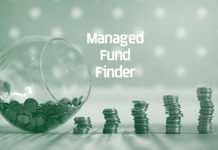
Bonds are useful in different economic conditions. Fixed rate bonds provide certainty in declining interest rate environments, floating rate notes pay a fluctuating rate of return and are often sought after when interest rates are rising. While inflation linked bonds are a very good long term hedge against rising prices.
1. Fixed rate bond
A fixed rate bond is the most common type of bond where interest is usually paid semi-annually.
These bonds perform best when interest rates are going down.
At first issue the interest rate is fixed and does not change over the life of the bond. This gives a lot of certainty to investors, who may need assured minimum levels of cash flow.
However, other factors may change, such as interest rate expectations or the perceived credit quality of the issuer. The only way a fixed rate bond can reflect changing conditions is through its price. A decline in interest rate expectations will push fixed rate bond prices up as investors will be willing to pay more for the known high cash flow.
Rising interest rate expectations will send fixed rate bond prices down, having an inverse impact on the yield, increasing it to an acceptable market level.
Fixed rate bond prices tend to be less capital stable than other types of bonds but this can be positive and contribute to higher than expected returns.
Investors in fixed rate bonds take an active position, accepting interest rate risk. If investors consider the market is changing from a declining interest rate expectation to an increasing interest rate expectation, they may decide to sell the fixed rate bond and reinvest in a floating rate note.
2. Floating rate notes (FRN)
FRNs take marginal interest rate risk as interest is adjusted quarterly and tied to a benchmark. The Australian benchmark is the 90 day Bank Bill Swap Rate (BBSW), as at January 2020 but this may change.
Interest paid on FRNs is usually the fluctuating benchmark plus a fixed margin. For example a three year ANZ FRN issued in February 2019 was issued with interest income at 3 month BBSW + 88 basis points.
FRNs are more capital stable and flavored by investors who do not want to take interest rate risk as well as those that expect a rising interest rate environment.
Interest is usually paid quarterly; the rate is set at the start of the quarter, then paid in arrears.
Many institutional investors prefer these bonds over fixed rate bonds.
3. Inflation linked bond (ILB)
The third type of bond, also the least common, is an inflation linked bond (ILB). The benchmark for these bonds is the Consumer Price Index (CPI) and a fixed rate margin is also added similar to FRNs. Corporate domestic inflation linked bond issuance is rare, however the Commonwealth government is a regular issuer.
Companies that issue ILBs often have income tied to CPI and want to minimise risk between borrowing and income. A good example is Sydney Airport, which has rental income via retail space that is linked to changes in CPI. It chooses to issue inflation linked bonds, so that some borrowings are also linked to CPI.
Other bonds
Covered bond – is a senior secured bond issued by a bank. The bond is secured against specific assets such as a mortgage pool. Holders of the bonds have first recourse to the mortgage assets and must be repaid in full before proceeds of the underlying assets are used to repay any other creditors. These are very low risk investments and often AAA rated or equivalent by credit rating agencies.
Eurobond – A Eurobond is issued by a borrower outside its home jurisdiction in a denominated currency. This does not mean it is European in its composition.
Government bond – A bond issued by the Commonwealth or other sovereign entities.
High yield bond – A bond that is rated sub investment grade by credit rating agencies or not rated at all. The low rating means a higher risk issue that must offer a higher yield attract investors.
Semi government bond – A bond issued by one of the Australian states or territories.
Zero coupon bond – A bond that does not make any interest payments (coupons) and has a single cash flow at maturity. It is at a discount to face value when first issued.

































